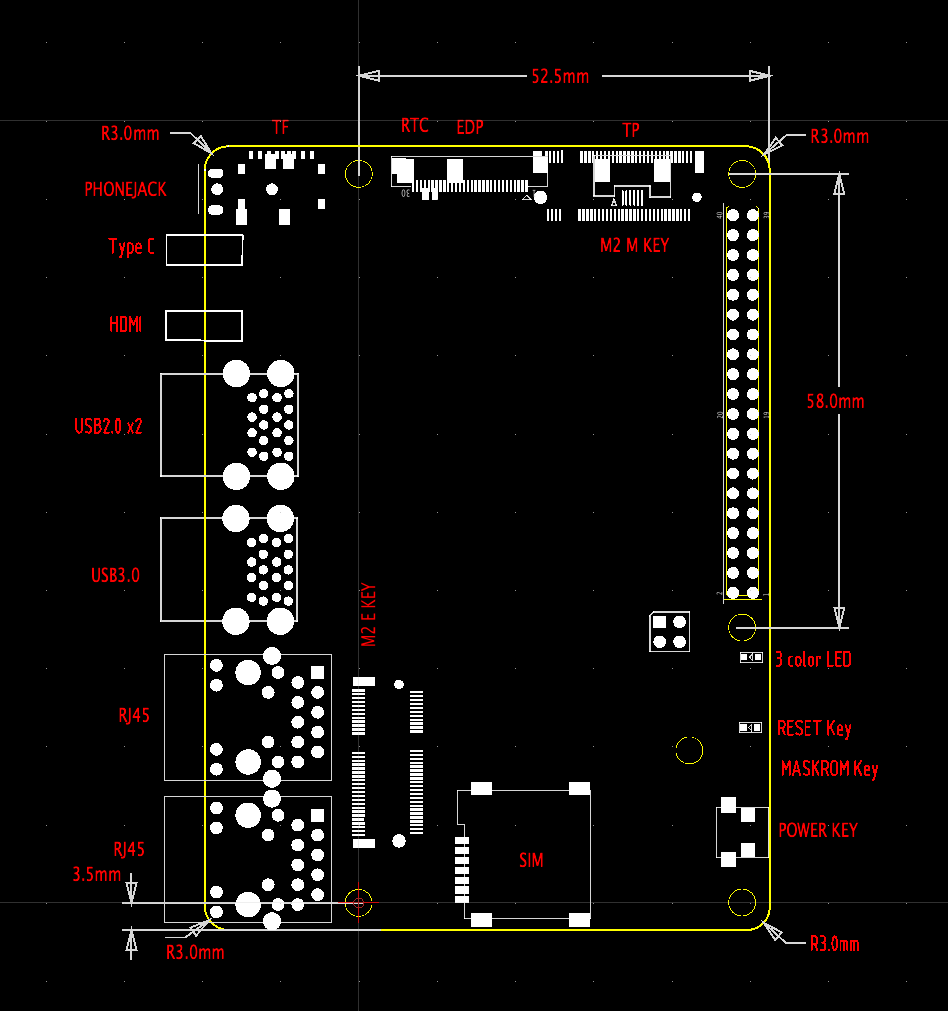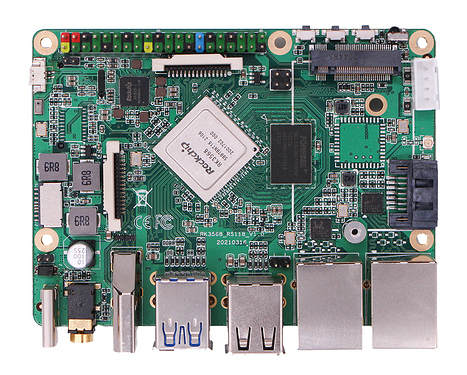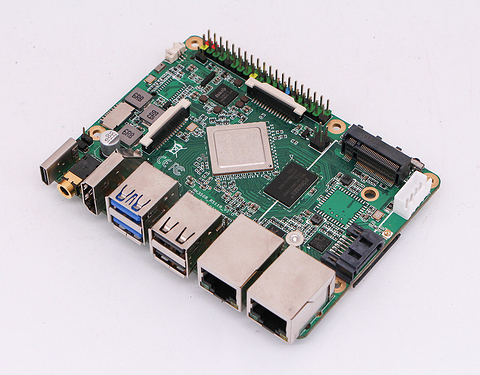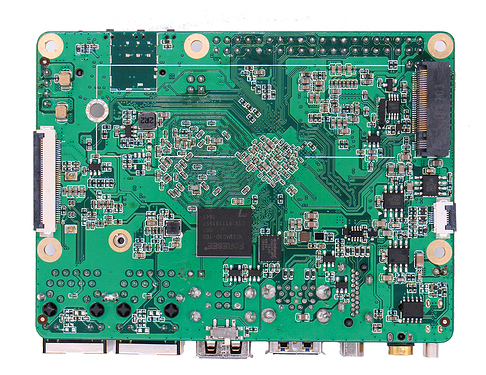Except the ROCK 3A with Rockchip, we have developed another RK3568 based SBC which we call it ROCK 3 Model B. ROCK 3B integrated some ideas we thought during the past years making SBCs.
The PI-CO ITX form factor:
We redefined the Pico ITX form factor mixed with the Pi form factor with the following benefit:
- All major ports are located at the same side(the rear side)
- Front side is for user interactive area such as power buttons, user keys, IR
- Board size is big enough for future expansion such as 16G/32G on board memory
- Compatible with Pi 40P header and mounting holes
- Board size is big enough to hold 2280 SSD
- Board size is big enough for multiple USB or multiple ethernets or multiple displays
- Board size is big enough for M.2 2242 LTE/5G modules or 2230 WiFi cards, TPU cards
A example layout of the board is shown as below:
We call it “the perfect SBC form factor”. ROCK 3B is the first public board in this form factor.




 “SATA support through the USB 3.1 ports” So I presume with the onboard and an addon card this means native x8 even if the bandwidth of the pcie sata is limited to a single lane.
“SATA support through the USB 3.1 ports” So I presume with the onboard and an addon card this means native x8 even if the bandwidth of the pcie sata is limited to a single lane.